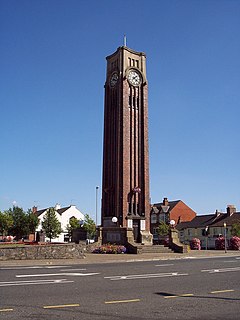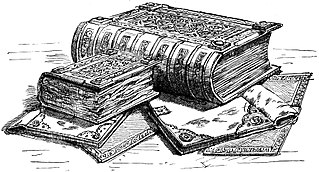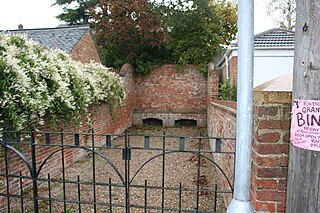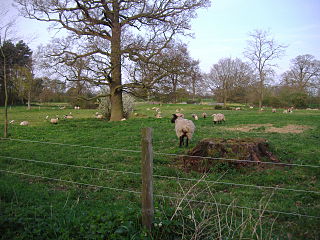Alton is a deserted medieval village between Coalville and Ashby-de-la-Zouch, in North West Leicestershire, England.

Coalville is a market town in North West Leicestershire, England, with a population at the 2011 census of 34,575. It lies on the A511 trunk road between Leicester and Burton-upon-Trent, close to junction 22 of the M1 motorway where the A511 meets the A50 between Ashby-de-la-Zouch and Leicester. It borders the upland area of Charnwood Forest to the east of the town.

Ashby-de-la-Zouch, often shortened to Ashby, is a market town and civil parish in North West Leicestershire, England, close to the Derbyshire border. It is twinned with Pithiviers in north-central France. The 2001 census gave a population of 11,410, which increased to 12,370 in the 2011 census. Ashby-de-la-Zouch Castle had importance in the 15th to 17th centuries. In the 19th century the town's main industries were ribbon manufacture, coal mining, and brickmaking. It was served by the Leicester to Burton upon Trent Line of the Midland Railway from 1849. The civil parish includes the hamlets of Shellbrook to the west and Boundary to the north-west. Nearby villages include Lount, Normanton le Heath, Smisby, Packington, Donisthorpe, Oakthorpe, Moira, Measham and Coleorton. Swadlincote, Burton-upon-Trent, Melbourne and Coalville are within 10 miles (16 km), with Derby 11 1⁄2 miles (19 km) due north. Ashby lies at the heart of The National Forest, about 24 miles (39 km) south of the Peak District National Park, on the A42 between Tamworth and Nottingham.

North West Leicestershire is a local government district in Leicestershire, England. The population of the Local Authority at the 2011 census was 93,348. Its main towns are Ashby-de-la-Zouch and Coalville.
The earliest documentation of the village is found in the Domesday Book where it appears as Heletone. [1] The land was rented out to someone by Hugh de Grandmesnil, and had a total value of 60 shillings. There were 25 villagers, 1 being a man at arms and 4 smallholders. There were 8 ploughs, 1 mill, 4 acres of meadow, woodland 1 league long. The name is probably derived from ald, and the suffix tūn, meaning "old settlement". [2]

Domesday Book is a manuscript record of the "Great Survey" of much of England and parts of Wales completed in 1086 by order of King William the Conqueror. The Anglo-Saxon Chronicle states:
Then, at the midwinter [1085], was the king in Gloucester with his council .... After this had the king a large meeting, and very deep consultation with his council, about this land; how it was occupied, and by what sort of men. Then sent he his men over all England into each shire; commissioning them to find out "How many hundreds of hides were in the shire, what land the king himself had, and what stock upon the land; or, what dues he ought to have by the year from the shire."
Hugh de Grandmesnil, also known as Hugues or Hugo de Grentmesnil or Grentemesnil, is one of the very few proven companions of William the Conqueror known to have fought at the Battle of Hastings in 1066. Subsequently, he became a great landowner in England.
It is one of only four villages in Leicestershire that seems to have been deserted as a result of grange formation, the others being Dishley, Ringlethorp and Weston. [3] The most important possessor of granges in Leicestershire was the Cistercian Garendon Abbey whose economy was largely based on sheep farming.

Monastic granges were outlying landholdings held by monasteries independent of the manorial system. The first granges were owned by the Cistercians and other orders followed. Wealthy monastic houses had many granges, most of which were largely agricultural providing food for the monastic community. A grange might be established adjacent to the monastery but others were established wherever it held lands, some at a considerable distance. Some granges were worked by lay-brothers belonging to the order, others by paid labourers.
Nothing remains of the village other than a few vague topographical features. [4]











